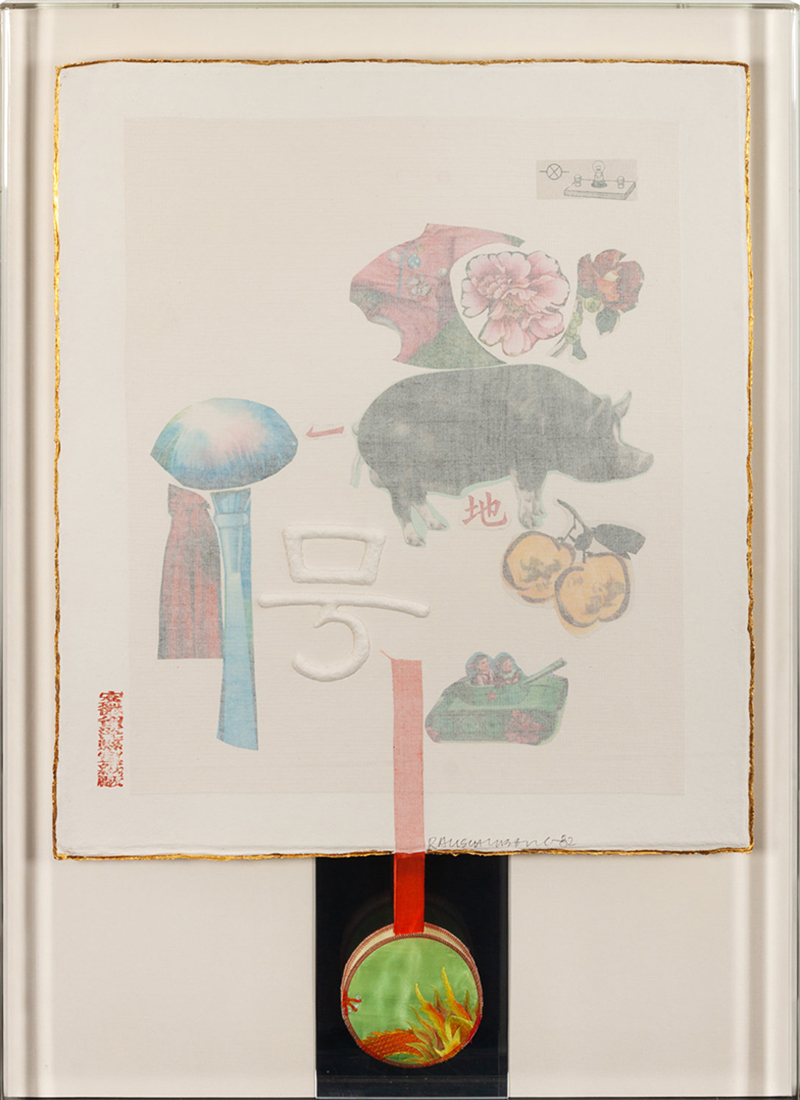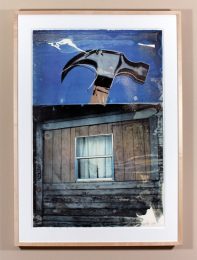Details — Click to read
ROBERT RAUSCHENBERG 1925 –2008
Port Arthur, Texas 1925 –2008 Captiva Island, Florida (American)
Title: Howl, from: Seven Characters, 1982
Technique: Original Unique Hand Signed, Dated and Numbered Collage with Silk, Mirror, Tissue Paper, Gold Leaf and Cloth Medallion on Wove Paper
Size: 101 × 67.3 cm. / 40 x 26.5 in.
Additional Information: This original work is hand signed in pencil by the artist “Rauschenberg” verso and dated “82” (1982) next to the signature.
It is also numbered in pencil from the edition of 70 unique works, on the verso.
It is from the series “Seven Characters” produced in 1982 in collaboration with Xuan Paper Mill in Jingxian, China.
The work was published by Gemini G.E.L., Los Angeles in a limited edition of 70 signed and numbered impressions. The sheet bears the red ink stamps in Chinese characters of “Xuan Paper, Jing County, Anhui Province”, “Robert Rauschenberg” and “Gemini G.E.L., Los Angeles” in the left and right margins.
It also bears the Gemini G.E.L ink stamp and the Gemini work number “RR82-10” in pencil, verso
The work is published laid on wood support affixed to a silk backboard in a Perspex box frame.
Literature: Robert Rauschenberg: A Catalogue Raisonné, 1966–2005. Los Angeles: Gemini G.E.L.
Reference: Gemini 1035
Condition: Very good condition. The Perspex with signs of wear.
























































































































